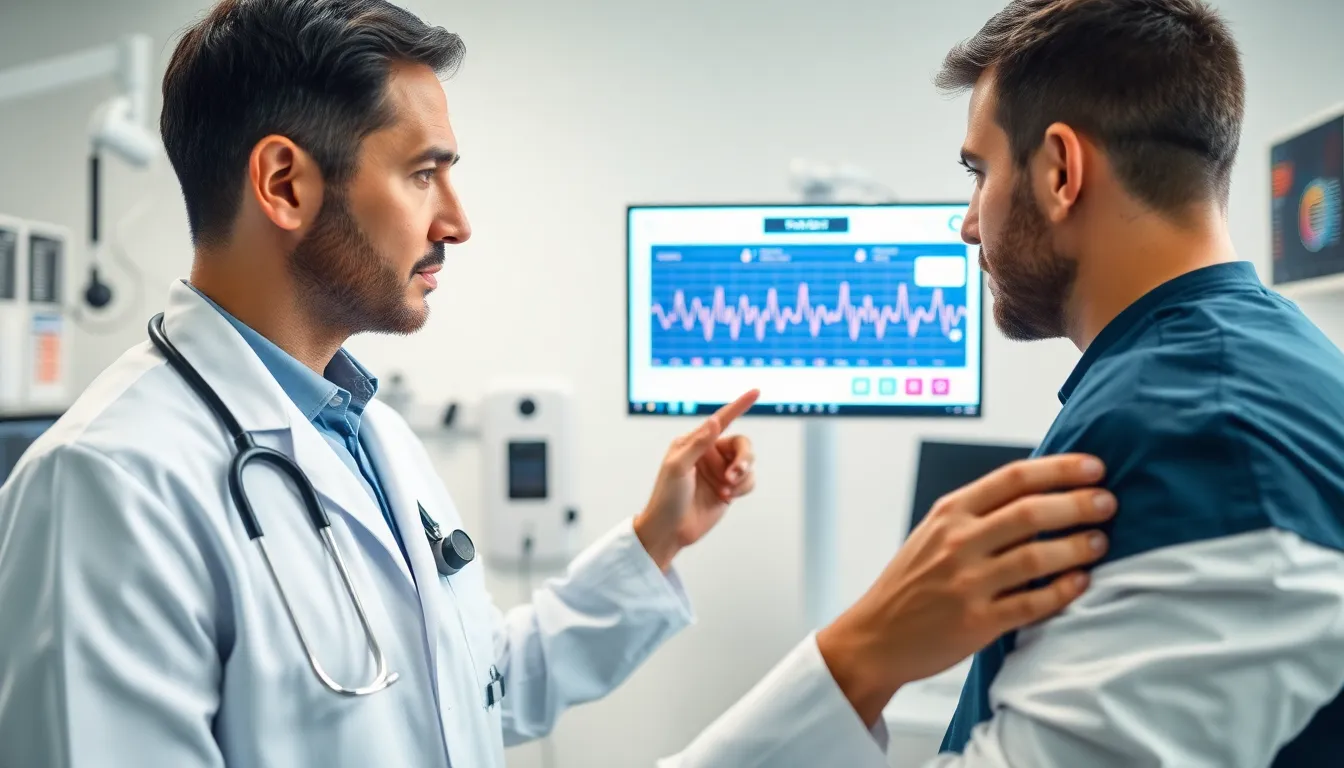Imagine a world where your doctor can monitor your health from the comfort of their couch, all while sipping a latte. Welcome to the Healthcare Internet of Things (IoT), where medical devices and everyday gadgets team up to revolutionize patient care. This tech-savvy duo is not just a passing trend; it’s reshaping how healthcare professionals interact with patients and manage their well-being.
From smartwatches that track heart rates to connected pill dispensers that ensure medications are taken on time, the possibilities are endless. The Healthcare IoT isn’t just about convenience; it’s about creating a proactive approach to health that can save lives. So buckle up as we dive into this fascinating world where technology and healthcare collide, making life healthier and a little more fun—because who said healthcare can’t have a sense of humor?
Table of Contents
ToggleUnderstanding Healthcare Internet of Things
Healthcare Internet of Things (IoT) represents a revolutionary shift in patient care. This technology enables real-time health monitoring, enhancing both patient engagement and outcomes.
Definition of Healthcare Internet of Things
Healthcare IoT refers to the interconnected network of medical devices that collect and exchange health data. Devices include smartwatches, remote patient monitors, and connected medication dispensers. These tools capture vital signs, track medication adherence, and transmit information to healthcare providers. With these advancements, healthcare professionals can access up-to-date patient data anytime. The definition encapsulates a broad spectrum of technologies aimed at improving health monitoring.
Importance in Modern Healthcare
Modern healthcare increasingly relies on Healthcare IoT to improve efficiency and patient satisfaction. This technology promotes proactive health management, enabling early detection of medical issues. Better data access directly results in timely interventions. Patients benefit from personalized care plans, facilitating better health outcomes. Cost reduction occurs through minimized hospital visits and decreased emergency care needs. Statistics show that 60% of healthcare organizations implement IoT solutions to enhance operational efficiency, showcasing its growing significance in the sector.
Applications of Healthcare Internet of Things

Healthcare IoT finds various applications that enhance patient care and improve operational efficiency. Key areas include remote patient monitoring and medication management.
Remote Patient Monitoring
Remote patient monitoring employs devices that collect vital health information. These devices track metrics like heart rate, blood pressure, and glucose levels in real-time. Patients can transmit this data to healthcare providers, allowing for timely interventions. For example, chronic disease patients benefit from continuous monitoring, reducing the need for frequent hospital visits. This technology not only increases patient engagement but also enhances the quality of care. Research indicates that 74% of health professionals believe remote monitoring improves health outcomes.
Medication Management
Medication management incorporates smart devices that dispense medication according to prescribed schedules. Connected pill dispensers send reminders to patients, ensuring adherence to therapy plans. Healthcare providers can monitor adherence rates, improving communication and follow-up. For instance, smart systems identify missed doses, prompting alerts for caregivers or healthcare teams. Statistically, over 50% of patients using IoT-enabled medication management report improved compliance. This technology optimizes medication usage and reduces complications from incorrect dosages.
Benefits of Healthcare Internet of Things
Healthcare IoT offers significant advantages, transforming patient experiences and optimizing healthcare delivery.
Enhanced Patient Care
Real-time health monitoring is a standout feature of Healthcare IoT. Connected devices enable patients to easily share vital metrics with healthcare providers. This connection allows for timely interventions, particularly for chronic disease management. Nearly 74% of health professionals recognize this technology improves health outcomes. Patients benefit from immediate feedback, leading to increased engagement in their health journeys. Enhanced communication between patients and providers promotes tailored healthcare solutions. Personalized care plans emerge as a common outcome of this proactive approach to health.
Cost Efficiency
Cost savings are a major benefit of Healthcare IoT adoption. By enabling remote monitoring, the need for hospital visits decreases significantly. Healthcare organizations report lowered emergency care costs due to proactive management. Expenses related to readmissions diminish as providers stay ahead of potential health issues. Data indicates that over 60% of healthcare organizations use IoT solutions to streamline operations, improving overall efficiency. Implementing these technologies leads to more strategic resource allocation. Patients also see reduced financial burdens, fostering a healthier healthcare ecosystem.
Challenges in Implementing Healthcare Internet of Things
Healthcare organizations face multiple challenges when integrating the Healthcare Internet of Things. Key obstacles include data security concerns and the complex integration of IoT devices with existing systems.
Data Security Concerns
Data security poses significant challenges when adopting Healthcare IoT solutions. Cybersecurity threats constantly endanger sensitive health information, making it crucial for healthcare facilities to implement robust security measures. Unauthorized access could result in breaches, potentially compromising patient data. It’s essential that organizations invest in advanced encryption technologies and regular security assessments to safeguard information. With 60% of healthcare organizations reporting increased cybersecurity threats due to IoT adoption, prioritizing data protection has never been more critical.
Integration with Existing Systems
Integrating Healthcare IoT devices with current healthcare systems presents additional hurdles. Compatibility issues often arise when combining new technologies with legacy infrastructure. It’s important for companies to ensure seamless communication between devices to maintain the reliability of patient data. Additionally, training staff on new IoT solutions can lead to disruptions in workflow. About 55% of healthcare providers express concerns about the challenges integration presents. Addressing these issues proactively can lead to more efficient implementation and successful deployment of IoT solutions.
Future of Healthcare Internet of Things
The future of Healthcare Internet of Things (IoT) promises significant advancements in patient care. As technology evolves, healthcare professionals recognize emerging trends that reshape patient experiences.
Trends to Watch
Telehealth and remote monitoring are gaining traction, with 60% of healthcare organizations adopting IoT solutions. Wearable health devices, like smartwatches and fitness trackers, continue to enhance data collection and patient engagement. Interoperability between devices is crucial, enabling seamless data sharing among healthcare systems. Artificial intelligence integration is expected to become standard, allowing for smarter analytics and improved decision-making. Increasing patient awareness about health data privacy impacts IoT device selection and trust in technology.
Potential Innovations
Innovation in Healthcare IoT centers on personalized medicine and predictive analytics. Smart devices will evolve, integrating advanced features like real-time health alerts tailored to individual patients. Virtual reality and augmented reality applications may assist in patient education and therapy. Enhanced machine learning algorithms can analyze vast datasets, predicting health trends and risks. Advanced cybersecurity measures protect sensitive health information, addressing data security concerns prevalent in IoT adoption. As these innovations develop, they shape a more proactive, efficient healthcare landscape.
The Healthcare Internet of Things is revolutionizing how patient care is delivered. By enabling real-time health monitoring and personalized treatment plans, it empowers both patients and healthcare providers. As technology continues to advance, the potential for improved health outcomes grows, making proactive health management more accessible than ever.
While challenges such as data security and integration persist, the benefits of IoT in healthcare are undeniable. With a significant number of organizations embracing these solutions, the future looks promising. Enhanced patient engagement and cost efficiency are just the beginning of what Healthcare IoT can achieve in creating a more effective healthcare ecosystem.



